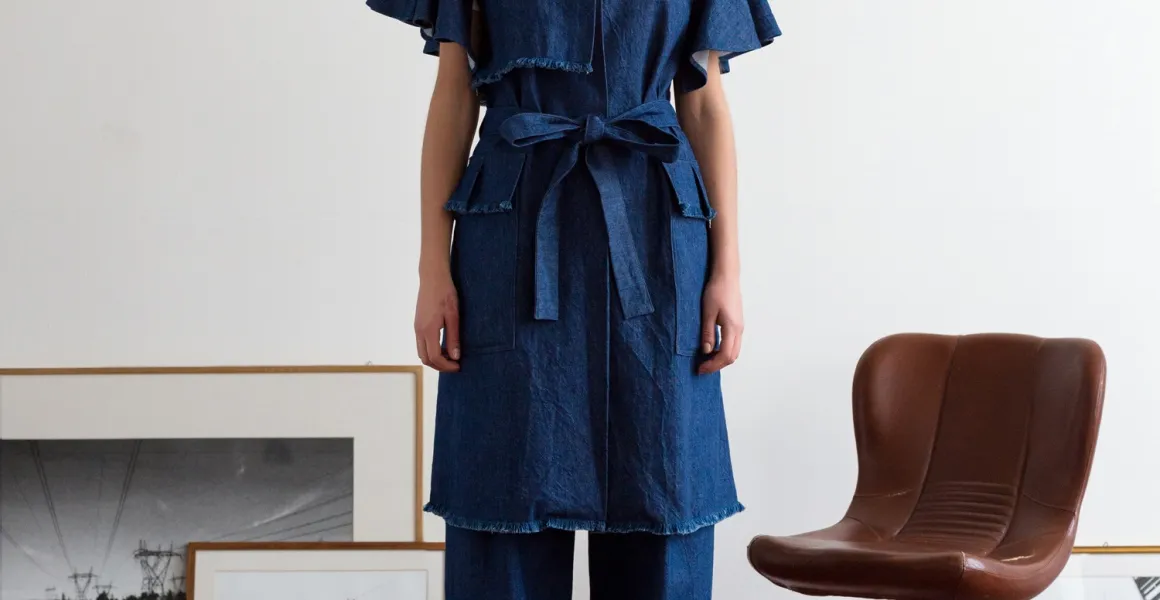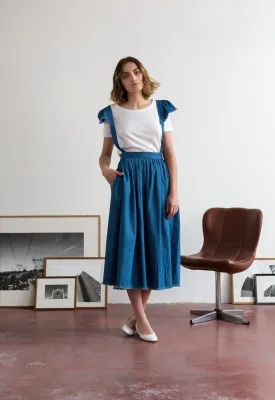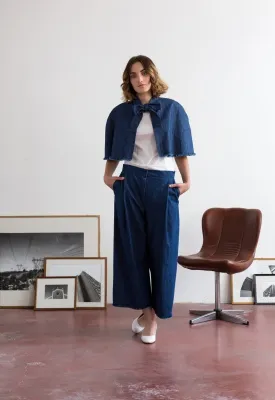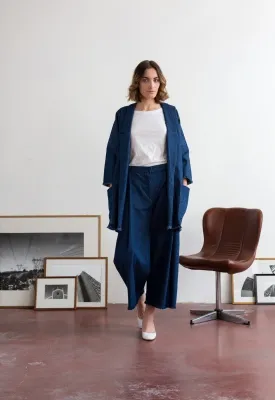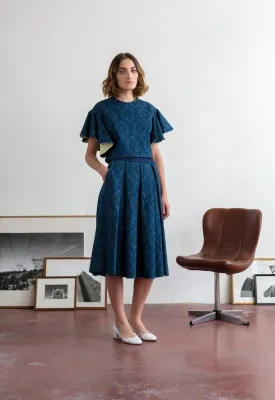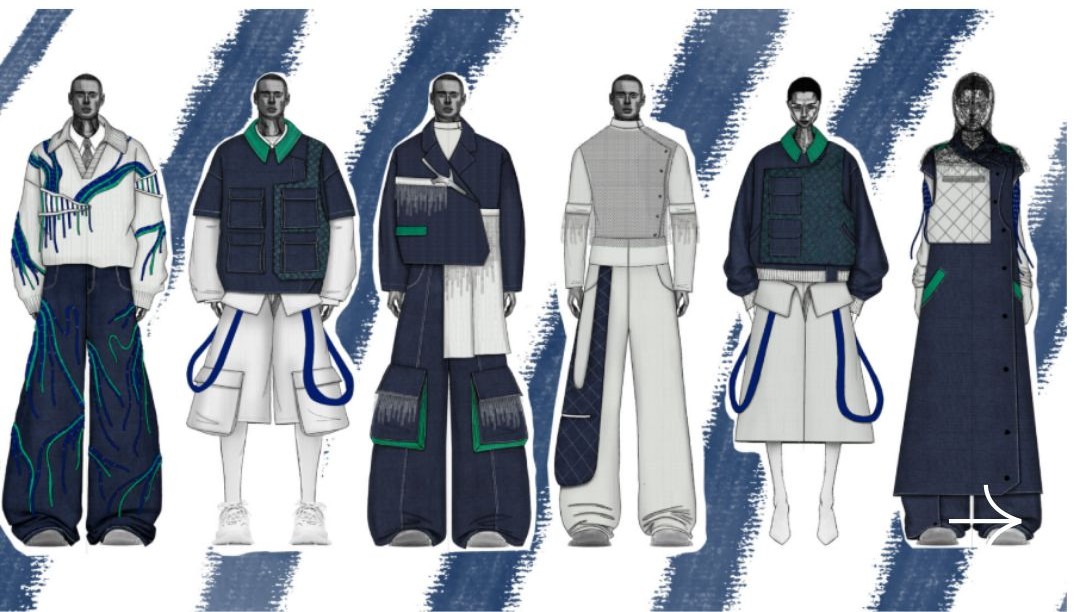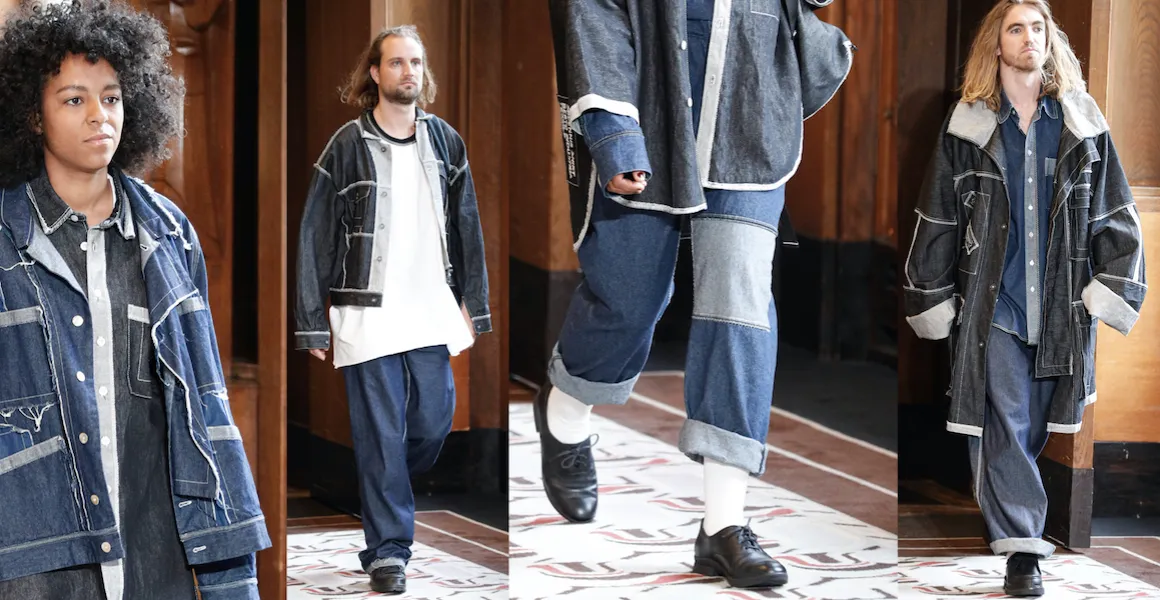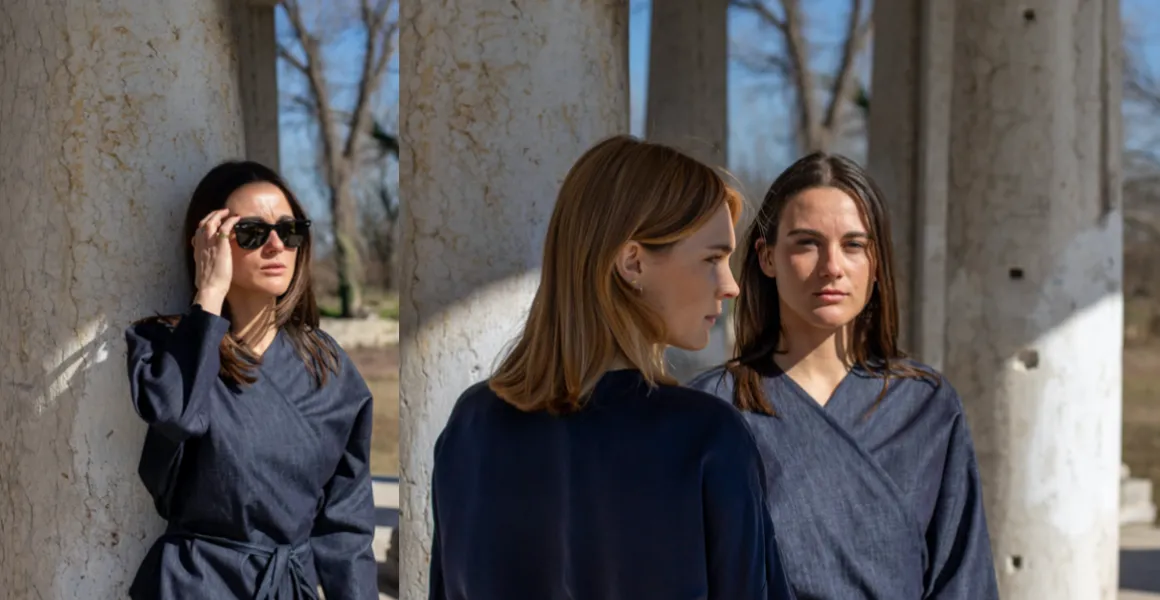What was your first project?
The first real project was a spring capsule for a store that wanted to offer garments refined in form and detailed in design. We offered the store’s clientele the fundamentals of tailoring tradition and contemporary design to create unique and personalized outfits.
The creative process: do you work instinctively or plan every single step? Where do your ideas come from?
It is precisely the concept of “fashion design” that inspires our work and creations. Suggestions and emotions awaken in us the soul of the Architect, suggesting new languages of signs and forms, a continuous exploration of colors and materials, greater attention to detail, and an ever-better choice of fabrics. The process is nothing but the design evolution of what impulsively arises from inspirations, which are the result of influences from our past and life paths: the rational architecture of the ’30s, neorealism and pop art, the avant-garde of the ’60s, and Fellini’s cinema. Everything around us can be a cue to contaminate a new work. Anything is an opportunity to reproduce the best creations in material form.
What did you think when Berto contacted you?
The collaboration with Berto began before the B4YT project, from a search for Made in Italy fabrics with innovative design. It was almost natural to become part of The Young Talents due to the empathy that immediately arose between us and the team of creators.
Which Berto fabrics have you worked with for your project and your collections?
The first project conceived on Berto fabrics was realized with the Oscar Ceck and Oscar Club variety. The continuous knowledge and growth of the collaboration allowed for a deeper understanding of both parties’ know-how, leading to a more targeted choice of fabrics.
What is the most significant part of Berto for Talents in your opinion? What goals have you been able to achieve thanks to this program?
The opportunity. We have always been aware that we cannot do everything alone, which is why the fundamental opportunity to collaborate with a company team rich in experience is a magnificent growth opportunity. During the first meeting, we managed to create an initial bond between our desire and their knowledge, from that moment we reset the counter and embarked on this journey that will strengthen Made in Italy. We needed to start making ourselves known, sharing our ideas with others both to implement them and to complete and expand them.
“Less but better” can be read as the approval of a certain degree of purity in design but also in fashion design. It can also be understood as an environmental message about reduction and sustainability. What do you think?
We indeed respond “Less Aesthetics, More Ethics” (7th International Architecture Exhibition ed.). The signals coming from all over the world force us to reflect on our behaviors and stimulate us towards new interpretations of the fashion universe. Reality presents us with a new challenge: to seek new ethical solutions compared to the usual aesthetic commitment of a project. We consider our laboratory a place to analyze the new dimension of behaviors and stylistic transformations to then give them form and visibility.
For a long time, many consumption habits seemed to have no consequences. It is now evident that there is an imbalance in the standard of living worldwide, fueled by the exploitation of labor markets. That’s why rediscovering the origin of zero-mile manufacturing production is certainly the cornerstone of ma va’.
Is there something you’ve never done that you’d like to achieve?
To use a metaphor dear to us: “We have just laid the foundations of our project and everything is yet to be realized”
